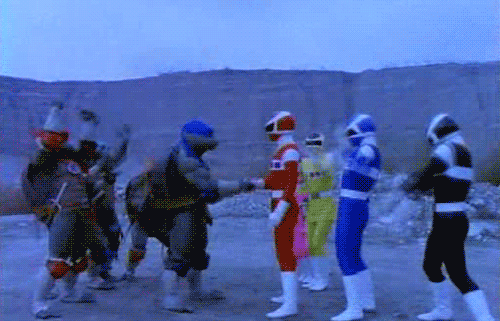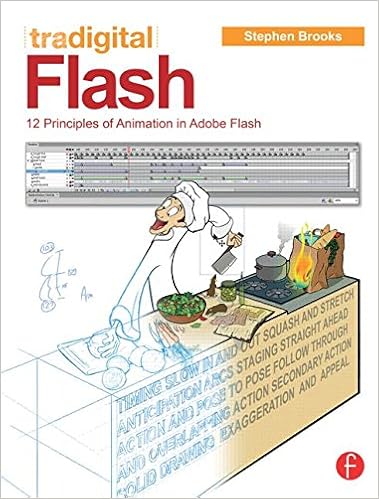How to Keep Your Freelance Animation Business Growing
Here it is... the FINAL part in my 4-part series on how to start a Freelance Animation business.Use these links to check out the other parts:
- Part 1: What to Expect in Your First Year
- Part 2: Building Your Freelance "Brand"
- Part 3: Make More Money - Getting Through Your Freelance "Plateau"
- Part 4: How to Keep Your Business Growing
Pledge anytime on Patreon to get the full ebook in February!Here's what is covered in this week's blog post on GROWING YOUR BUSINESS:
- Hire other people to help you
- How to know when to hire-out by discovering your Speedbumps
- Form cooperative relationships with other Freelancers
- Adjust quote prices to accommodate extra hires
- Final Words
... there's also a "Too Long Didn't Read" section at the bottom if you just want the gist - or wait for the podcast episode dropping on Wednesday!Listen to this blog post as an iTunes podcast![audio:http://traffic.libsyn.com/rubberonion/rubberonionpodcast-118-freelancing_year_4.mp3|titles=RubberOnion Animation Podcast - #118: "How to Grow Your Freelance Animation Business"]![]()
![]()
![]() Or via SoundCloud if you prefer...
Or via SoundCloud if you prefer...
Here's the deal...
There might come a time as an independent Freelancer that you simply outgrow a one-person operation. Maybe it's that...
- ... you have more work opportunities coming in than you can actually do
- ... the time spent working on the projects you do have is crippling your ability to pursue other work and raise your profile.
- ... your real talent (say, character design) is being held back by the need to divide your attention into other areas where you are less proficient
Whatever the reason, it's time to grow. But before I continue, a disclaimer needs to be made: don't grow too fast. It's important to have a solid base as your expand your business or else you could risk toppling over at the first real sign of difficulty.With that out of the way, let's talk about the most obvious way you can expand your business...
HIRE OTHER PEOPLE to help you
 There are basically two types of people you can hire:
There are basically two types of people you can hire:
- People who compliment your skills (i.e. they do what you can't or don't want to do)
- "Mimics" (i.e. someone who can act as your exact clone)
Of those hire types, I break up the hire options into three levels of tasks you can have them perform:
1. Small Artistic and/or Business Tasks
This is the most common level of hire and the one you should consider first.Let's start with business tasks - these are like:
- an entertainment lawyer (on a case-by-case basis) to look over contracts
- a CPA (certified public accountant) to do your taxes and help with things like becoming/maintaining an LLC (which will be covered in my ebook that you'll get on Patreon)
- a virtual assistent to do basically everything you can think of: travel research for a film fest (flights, accommodation, etc), inputting business cards you get into a contact sheet, schedule organization, and even google image search for design work
Small artistic tasks either have a low-skill threshold, are tedious, or those that can be completed quickly by someone with a particular talent like:
- designing a color palette
- making character packs off your designs
- minor client revisions (changing colors, shifting some timing around after an audio change, etc)
2. Mid-level Artistic Tasks
These tasks for animators are usually those time-sinks or the parts of production where you're not particularly skilled and therefore slow you down, like:
- cleanup (line/color)
- background/character design
- compositor (AE lighting/multi-plane effect)
3. Large Artistic Tasks
Here's where you'll most likely use a "mimic" like I said above, because basically what we're talking about here is:
- completing a full animation project off of your storyboards
HOW TO KNOW WHEN TO HIRE-OUT by discovering your Speedbumps
 Here are a few questions I want you to answer:
Here are a few questions I want you to answer:
- What part of your day do you like the most?
- What part of your day do you hate?
- What part of the animation process do you like the most?
- What part of the animation process do you hate?
- When in the animation process do you tend to slow down?
The answers to those questions will help you find out where your speedbumps are in your career as a Freelancer.
For example, let's say you answer the following:
HATE in your day: emails in the morning and invoices in the eveningLIKE in your day: just after lunch when you have no business distractions and can just do artHATE in the process: doing lipsync and cleaning up rough animation you've done because it feels like tracing your own workLIKE in the process: animating the character acting and compositing all the elements together at the endSLOW part of the process: designing backgrounds because your focus is on characterKeep in mind, these aren't mine - I actually really enjoy doing lipsync - but the point is that when you've amassed this information you can learn that your true focus is on character acting, you're distracted by business tasks and you enjoy seeing it all come together in compositing.That means that you should hire a virtual assistant to handle small business items, an animator who can ink and paint your rough animation, another animator to do lipsync, and if you can spare the time to do backgrounds yourself you do them... otherwise you could hire an artist to design backgrounds as well.You smooth out the speedbumps by hiring specialists to take on small and mid-level tasks which would normally slow you down, freeing you up to find and do more work.
FORM COOPERATIVE RELATIONSHIPS with other Freelancers
 You don't always need to hire someone in order to benefit from getting outside help. Something that should really happen more often, or at least be more common knowledge as an option, is the cooperative inter-Freelancer relationship.
You don't always need to hire someone in order to benefit from getting outside help. Something that should really happen more often, or at least be more common knowledge as an option, is the cooperative inter-Freelancer relationship.
#1 - The "That's Not My Job" Relationship
How many times, as an animator have you heard some variation of the following:[themeone_pull_quote align="left" border="true" width="40%"]"You do animation? That's fantastic, can you build my website?"[/themeone_pull_quote]
You and I both know that these are not equatable. I mean, sure, I probably could... but that's not my job.
In this case you can form one type of relationship with a freelance web designer and/or developer that I call the "That's Not My Job" Relationship. Simply put, you strike up a deal with this other Freelancer that when these types of jobs come in that you will pass them directly on to him/her, and when they get a job prospect in animation they pass it onto you.
#2 - The "Finders Fee" Relationship
This is very similar to the previous one in that you're passing work on but it could be anything. However, in this case, the deal is that the Freelancer passing the work onto the other takes a kind of "finders fee" cut of whatever the total budget for the job ends up being.
Many Freelancers like this and will agree to this because it assures a proper weighted balance. If they bring you more work than you bring them, they're getting proportionately more money for the arrangement.
Effectively, it's like a monetary acknowledgement to the Freelancer passing on the work that the reason that job opportunity came to them in the first place was due to all the effort they have put into getting their name and brand out there and seen.
#3 - The "Overflow" Relationship
In this case, you're teaming up with another Freelancer who gets work at times you don't. For instance, if you tend to get more work opportunities in the winter than you can actually take but your summers are slow and you meet someone who's experience is the opposite, then you give each other the work you can't do in your respective heavy load times.
It's a mutually beneficial arrangement that appeals to the Freelancer's desire (and need, let's face it) for some financial consistency.
#4 - The "Teamwork" Relationship
You're an animator. You have a friend who is a programmer. And maybe through mutual overlapping networks you both have connections in the online ad world.You can pursue interactive online experiences heavy in animation because your programmer friend does what you can't do and you do what they can't.I want to be clear about this one, you're not forming an official partnership - this type of relationship is a loose combination of efforts to break into a market that both of you would otherwise be excluded from. Think of it as basically you're both hiring each other to do the work you can't do in the same project. [themeone_quote color=""]This 4-part Freelancing School series is part of an ebook I'm releasing this month which will have more detailed information on exactly how to build your freelancing business. The ebook will go into areas that I didn't explore in these blog posts like (in this week's case of expanding your business) passive income and other revenue streams. By becoming a Patron at any level on my Patreon page you'll get the ebook as a perk or you can buy it as a single download on this blog (coming soon). Thanks for supporting![/themeone_quote]
[themeone_quote color=""]This 4-part Freelancing School series is part of an ebook I'm releasing this month which will have more detailed information on exactly how to build your freelancing business. The ebook will go into areas that I didn't explore in these blog posts like (in this week's case of expanding your business) passive income and other revenue streams. By becoming a Patron at any level on my Patreon page you'll get the ebook as a perk or you can buy it as a single download on this blog (coming soon). Thanks for supporting![/themeone_quote]
ADJUST QUOTE PRICES to accommodate extra hires
 There are two economic terms that you'll need to know here for me to make a quick point:
There are two economic terms that you'll need to know here for me to make a quick point:
- Fixed-cost (aka overhead) - "Business expenses that are not dependent on the level of goods or services produced by the business. They tend to be time-related, such as salaries or rents being paid per month." In our case, this also refers to subscriptions to Adobe Creative Cloud, dropbox, hosting services, url registration fees, business phone lines, etc.
- Variable-cost - "Costs that change in proportion to the good or service that a business produces." This can be things like sound effects, music or images purchased for use in a project which won't be reimbursed. For the purposes of this blog entry, this will refer to the cost of hiring other people like those referred to above.
The basic strategy is this: keep a tally of who charges what, add up those costs, round them up (to account for small issues that may come up), and add that to the fixed quote.
For example, let's say:
(stay with me, here, because it could get a little hard to follow... here we go!)
- Your fixed monthly cost = $3000 (technically this would be a goal, because maybe you need $1500 in expenses and want another $1500 to "earn a living"... but a goal is a goal so you should treat it as a need)
- You tend to produce 3 minutes of animation per month, on average.
- That means you can/should aim to charge $1000 per minute of animation completed.
So if...
- It takes you 3 days to complete one-minute of cleanup animation, you may decide to hire a Freelancer to do that.
- Your variable cost of hiring the Freelancer is $250 per minute of cleanup animation completed.
- It's a bit simplistic, but basically your per minute rate is now $1250.
This means that...
- You've now saved yourself 3 days of work per minute of animation would would normally complete in a month.
- Therefor, you've effectively given yourself 9 extra days per month to find work or even animate an EXTRA full minute of animation!
FINAL TALLY:
- 4 minutes of animation produced in that month
- Earned $4000
- Paid Freelancer $750
- Total profit = $3250
So you might ask yourself, "what's the difference if it's only another $250 for that month?"In that case you're overlooking the fact that a new project was completed, which means you've deepened your client network, and a Freelancer has 3 projects to add to their reel which increases your profile as an established brand in the industry.This is simple math, obviously, but the concept remains the same: hire freelancers to free up time to get more work while still producing the quality work your clients have come to expect.Once you get good at seeing those opportunities, the potential for business expansion becomes much more evident in real, tangible ways.
FINAL WORDS
I hope this 4-part series helped you to either start your own freelance animation business or refine the direction of the one you already have. If you're in one of those two categories, please send me a message and let me know your story because that always brightens my day!THE EBOOK will be on sale this month or you can become a Patron at any level on my Patreon page and get it as a perk! If you signed up for the Newsletter in the month of January and before, you're getting a copy for free... thanks so much for following!As for becoming a Freelance Animator, the bottom line is that nobody is going to invite you into it. If you want to get into the game, you'll have to jump right in. While I do advise you to make a plan to follow through on, you should absolutely revisit that plan as you progress and adapt to the new opportunities and personal experiences that are presented to you.If you want more help than is in these four blog posts (1 2 3 4) and podcast episodes (1 2 3 4), I am available for consultation at $100/hr Skype chat or an hour chat every month for $50 via Patreon.  I have an animation tutorial book coming out in March through the respected art book publisher Focal Press, it's available for pre-order now and is fully updated for the new Adobe Animate CC release! Click the image to check out the Amazon page if you like this and other blog posts and the way I explain things TL;DR Hire people to take on tasks that you can't or don't want to do (i.e. taxes, scheduling, background design, cleanup animation), form a cooperative relationship with another Freelancer to trade work, and use these options to open up your day and provide more time to search for new job opportunities and complete bigger projects.This is part 4 of 4 in a "Freelancing School" series. Check out the other parts using these links:
I have an animation tutorial book coming out in March through the respected art book publisher Focal Press, it's available for pre-order now and is fully updated for the new Adobe Animate CC release! Click the image to check out the Amazon page if you like this and other blog posts and the way I explain things TL;DR Hire people to take on tasks that you can't or don't want to do (i.e. taxes, scheduling, background design, cleanup animation), form a cooperative relationship with another Freelancer to trade work, and use these options to open up your day and provide more time to search for new job opportunities and complete bigger projects.This is part 4 of 4 in a "Freelancing School" series. Check out the other parts using these links:
- Part 1: What to Expect in Your First Year
- Part 2: Building Your Freelance "Brand"
- Part 3: Make More Money - Getting Through Your Freelance "Plateau"
- Part 4: How to Keep Your Business Growing

